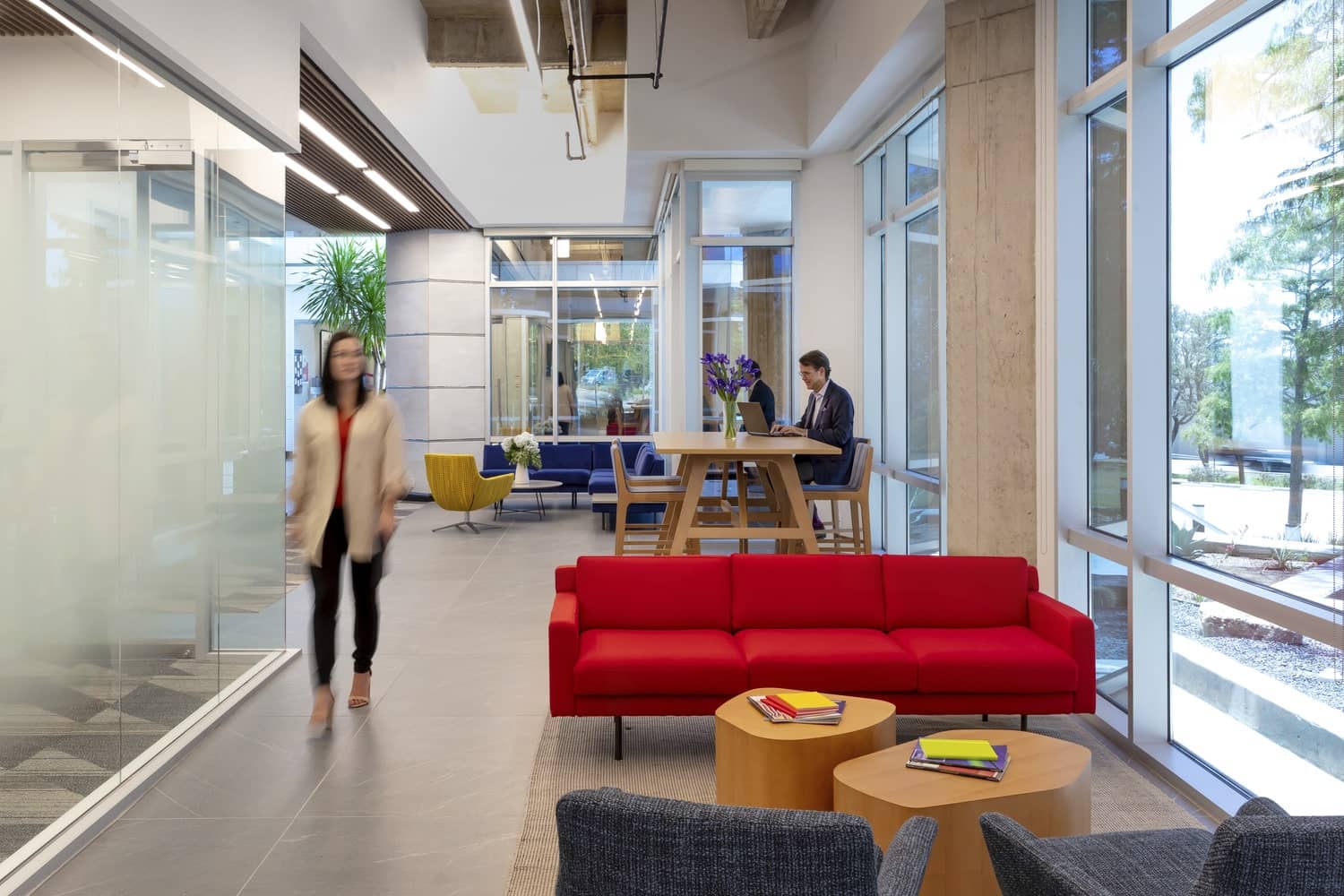We usually think of commercial office space in terms of our leading downtown areas and nearby suburban office parks. Hidden in that definition is a quiet reality, the association of commercial office space with major metro areas such as New York, Los Angeles, San Francisco, San Jose, Austin, Chicago, Boston, Houston, Dallas and the DC metro region.
What we see after the pandemic is different. Our Central Business Districts (CBDs), tech centers, and suburban office parks remain strongly in place. At the same time, there are also substantial and growing commercial office centers in such secondary markets as Atlanta, Boise, Charlotte, Columbia, South Carolina, Denver, Miami, Minneapolis-St. Paul, Nashville, Phoenix, Orlando, Raleigh, Sacramento, Salt Lake City and Bellevue, which is why KBS has been investing in these markets for years.
Secondary office markets
Don’t be fooled by the term “secondary.” Secondary markets are population hubs, in some cases large cities, but not on the scale of the nation’s largest metro areas. Class-A office space can be readily found in both primary and secondary markets.
There’s no doubt that the COVID-19 pandemic changed office standards. Some of the most visible trends include the growing use of home offices, flexible scheduling, more space per employee, and new levels of safety and sanitary standards in public settings.
These changes are important and will be with us going forward, but they do not fully reflect workplace trends.
The hunt for talent
But why the new interest in secondary markets? The answer is talent. In the post-pandemic world, skilled labor is the prize. Organizations are going all-out to get the best people, and it follows that those individuals will have different personal preferences. Simply put, some individuals believe they can obtain a better work-life balance outside major metro areas. Offices in secondary markets allow organizations to attract talent that may not be accessible in a major metro area.
Real estate
For many workers, the preference for secondary markets has a lot to do with housing. According to the National Association of Realtors, typical metro home prices in the first quarter stood at $1.2 million in San Francisco and $1.5 million in San Jose. For many, such prices can be daunting.
This is not a new issue. In 2017, Glenn Kelman, CEO with the national real estate brokerage, Redfin, told CNBC that “the technology companies, the Wall Street companies, they’re chasing the talent, [and] the talent is chasing affordable housing.”
“Google,” said Kelman, “employs more engineers outside of Silicon Valley than it does in Silicon Valley, and if Google can’t afford Silicon Valley, then no one can.”
Relocation can be enticing. A worker who sells a home in a high-cost market and moves to a secondary city may have enough cash from the sale to purchase a replacement property for cash. That will mean no mortgage payments, the probability of far-smaller property taxes, and maybe even a significant amount of cash left over. Importantly, some or all of the sale profit may be exempt from federal taxes. As the IRS explains, “if you have a capital gain from the sale of your main home, you may qualify to exclude up to $250,000 of that gain from your income, or up to $500,000 of that gain if you file a joint return with your spouse.” For details and specifics, it’s wise to speak with a tax professional.
Taxes
Under the Tax Cuts and Jobs Act of 2017 (TCJA) the ability to write off mortgage interest, property taxes, and state income taxes was limited to $10,000. This is a big issue in areas with high state income taxes and steep property values. At the same time, the TCJA legislation essentially doubled the standard deduction, good news for property-owning taxpayers in such areas as Texas, Florida, and Tennessee — jurisdictions with generally less expensive housing and no state income taxes.
Pay
Given lower expenses, will workers receive the same pay in the secondary market? This is a question with no clear consensus. On one hand, in a poll taken this year by the website Blind, 64% of the professionals surveyed said they would rather work from home than get a $30,000 pay increase.
On the other hand, remote pay is likely to be a contentious issue.
For example, CNET reports that last fall, one team at Google “was told it would need to relocate to North Carolina from the company’s office in Sunnyvale, California, about 40 miles south of San Francisco. The prospect of ditching Bay Area housing prices and long commutes was a powerful draw. The move, however, came with a 15% salary cut, she said. Then in late March, the team was told it would be a 25% cut. About a month later, the team relocation plans were scrapped altogether.”
Weather
Some of us like to live by the beach and some by the mountains. Some like snow and skiing, and others like swimming year-round. And, let’s face it, some like warm winters and some don’t.
Whatever the personal preference, there are secondary cities to accommodate every taste.
Commuting
The Nation’s population continues to grow, and many metro areas are now larger than ever. The by-products of such growth include more cars, more commuters, and more time on the road.
According to a 2019 report by The Washington Post, “the average American commute grew to just over 27 minutes one way in 2018, a record high,” according to data released in September by the U.S. Census Bureau.
“The average American,” the Post continued, “has added about two minutes to their one-way commute since 2009, the data shows. That may not sound like a lot, but those numbers add up: The typical commuter now spends 20 more minutes a week commuting than they did a decade ago. Over the course of a year, it works out to about 17 additional hours commuting.”
One result: Figures from the Census Bureau show that in 2020 nearly 1.3 million people moved to simply find an easier commute.
Boomerang workers
Axios explains that “’boomerang workers’ — those who’ve returned to their hometowns to do remote work — rose with the pandemic, but the phenomenon shows signs of sticking around beyond it.”
“Workers typically have to move to where the jobs are, centralizing top talent in big coastal cities,” according to the news service. “But as COVID drove rapid adoption of remote work, many people who were able to opted to return to their roots to be closer to family, raise kids in familiar settings or simply escape big city life.”
Axios adds that “the boomerang effect isn’t limited to any one industry. But tech workers in particular are choosing to leave big tech hubs like San Francisco, Seattle and New York and moving back to previous stops, or to their own hometown or a spouse’s. That’s jumpstarting tech communities in some mid-sized cities.”
The need for secondary office centers
With the growing working-from-home (WFH) trend, it might seem as though the need for secondary market locations can be reduced, but that’s not the case for two major reasons.
First, the number of remote workers is limited. McKinsey & Company estimates that between 20 and 25% of the post-pandemic workforce might be able to work from home three to five days a week without a productivity loss. That means most employees simply cannot work from a home-based location.
Second, the attractions of working from home may be overblown.
“We found,” said McKinsey, “that some work that technically can be done remotely is best done in person. Negotiations, critical business decisions, brainstorming sessions, providing sensitive feedback, and onboarding new employees are examples of activities that may lose some effectiveness when done remotely.”
Offices in secondary markets represent an opportunity to attract and keep talented employees who prefer certain locations, while at the same time offering the office structure so many need. While secondary locations won’t replace headquarters in major metro centers, they will instead effectively extend them.
Find the industry trends, news and conversations at kbs.com/insights, or click here.




